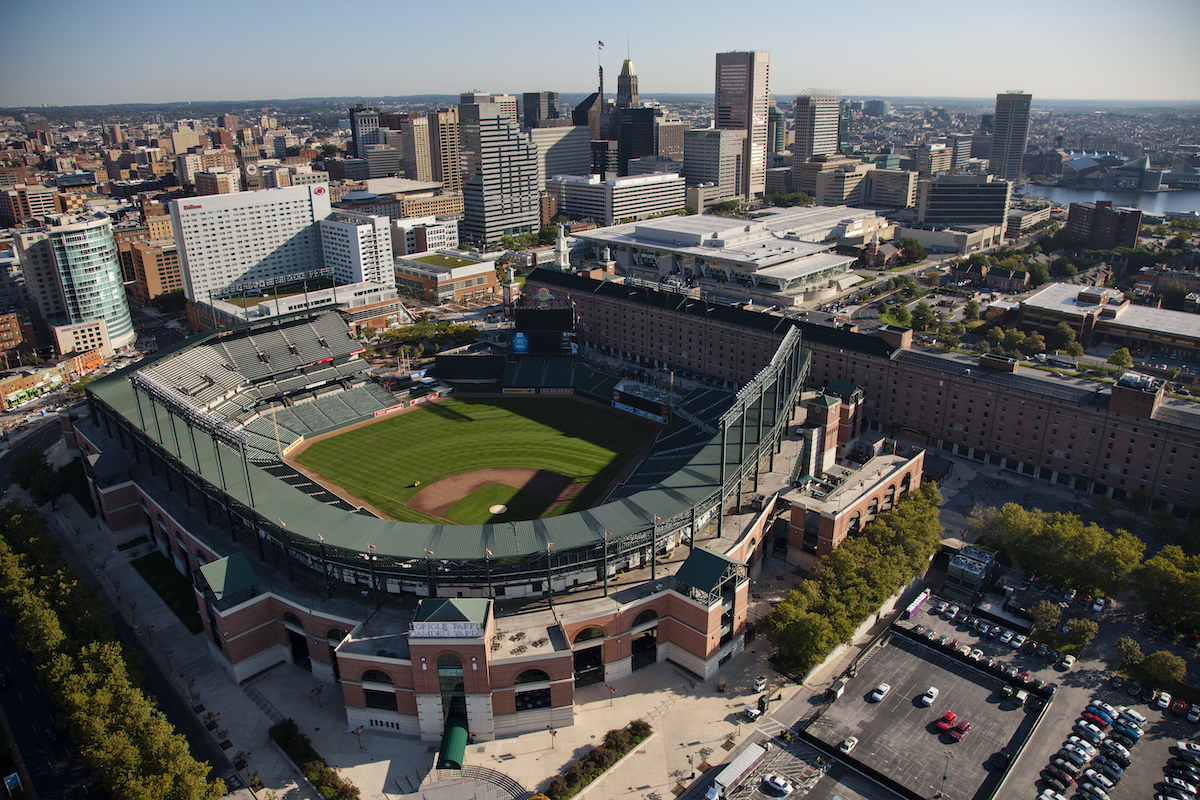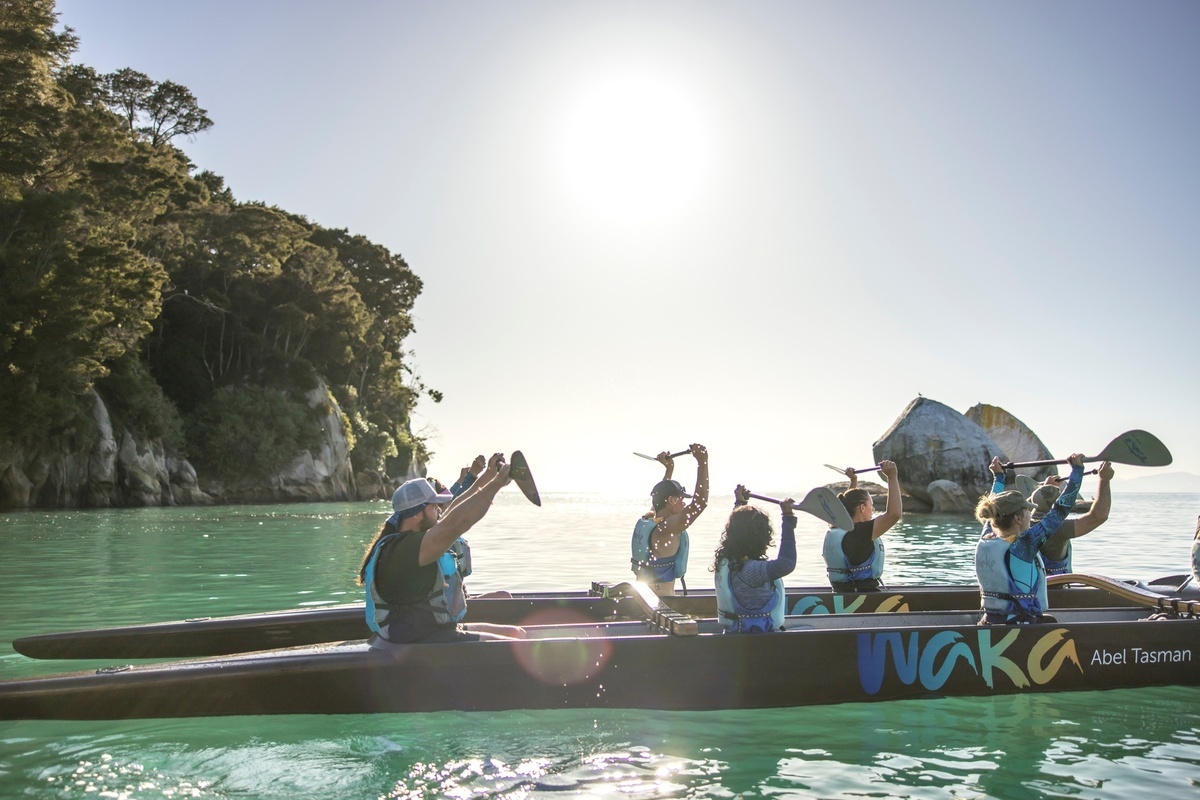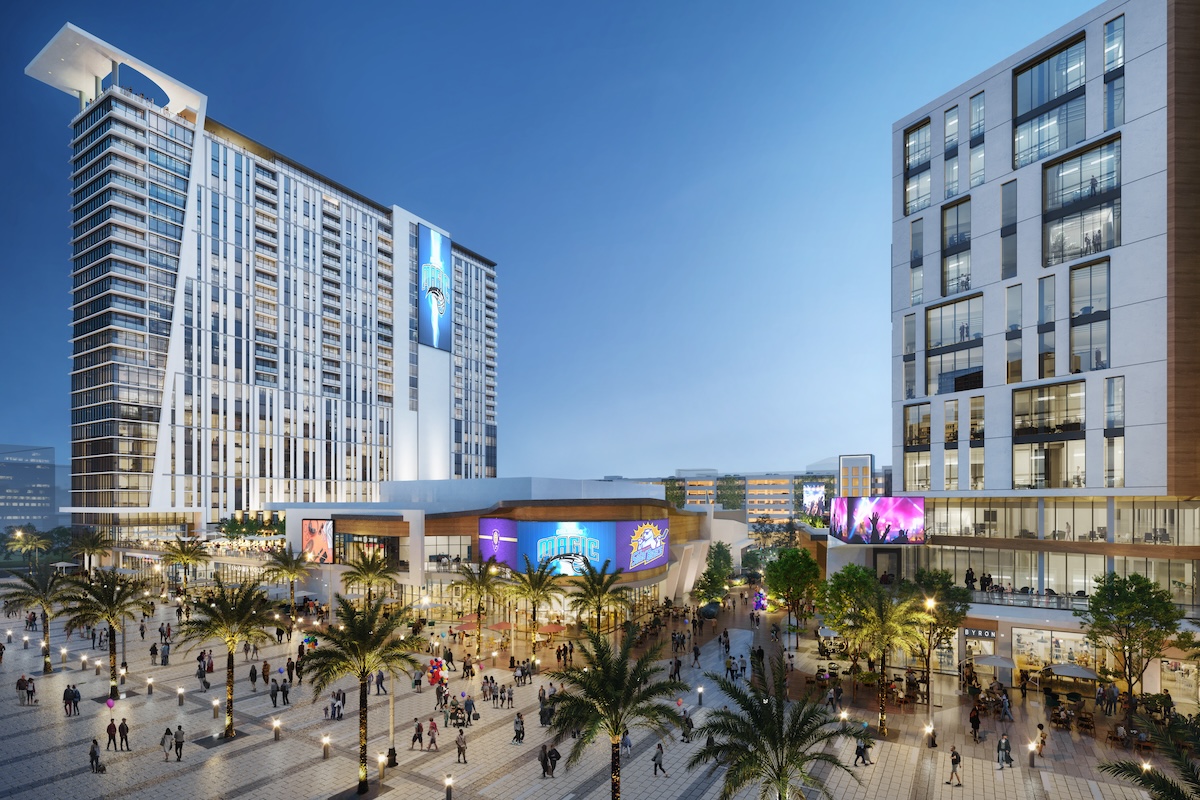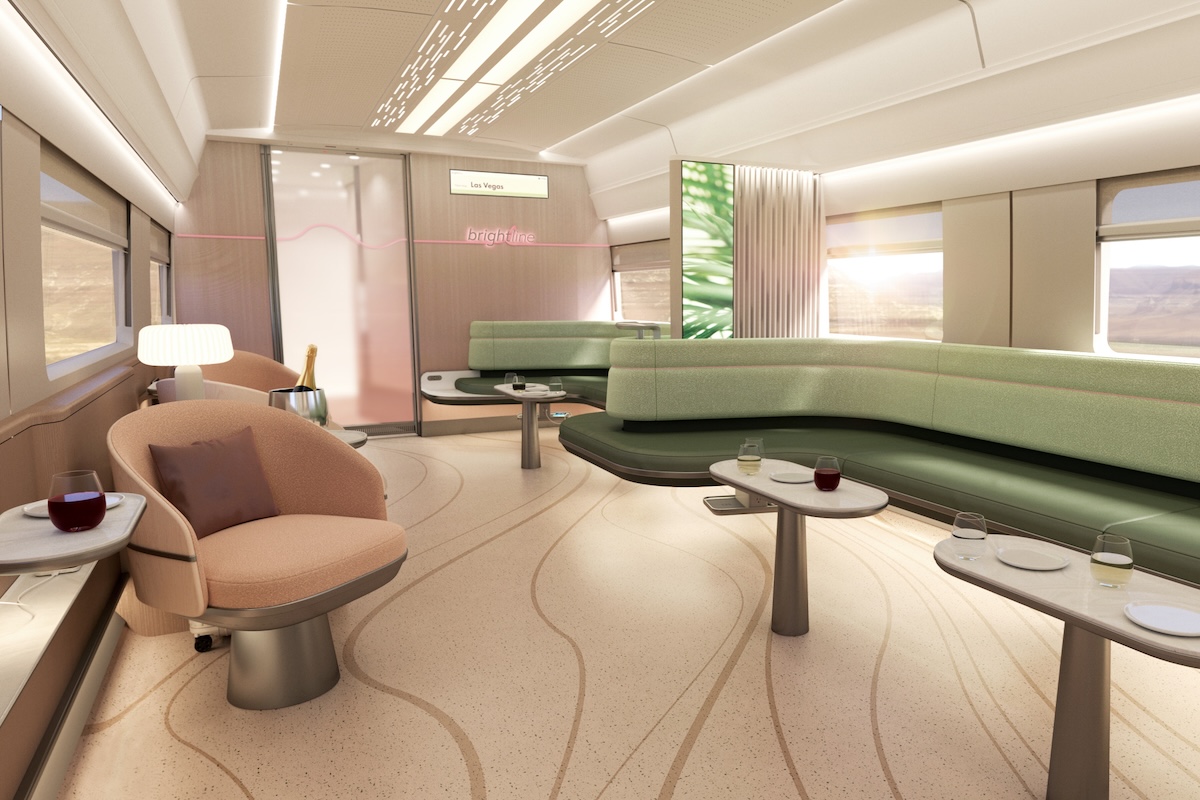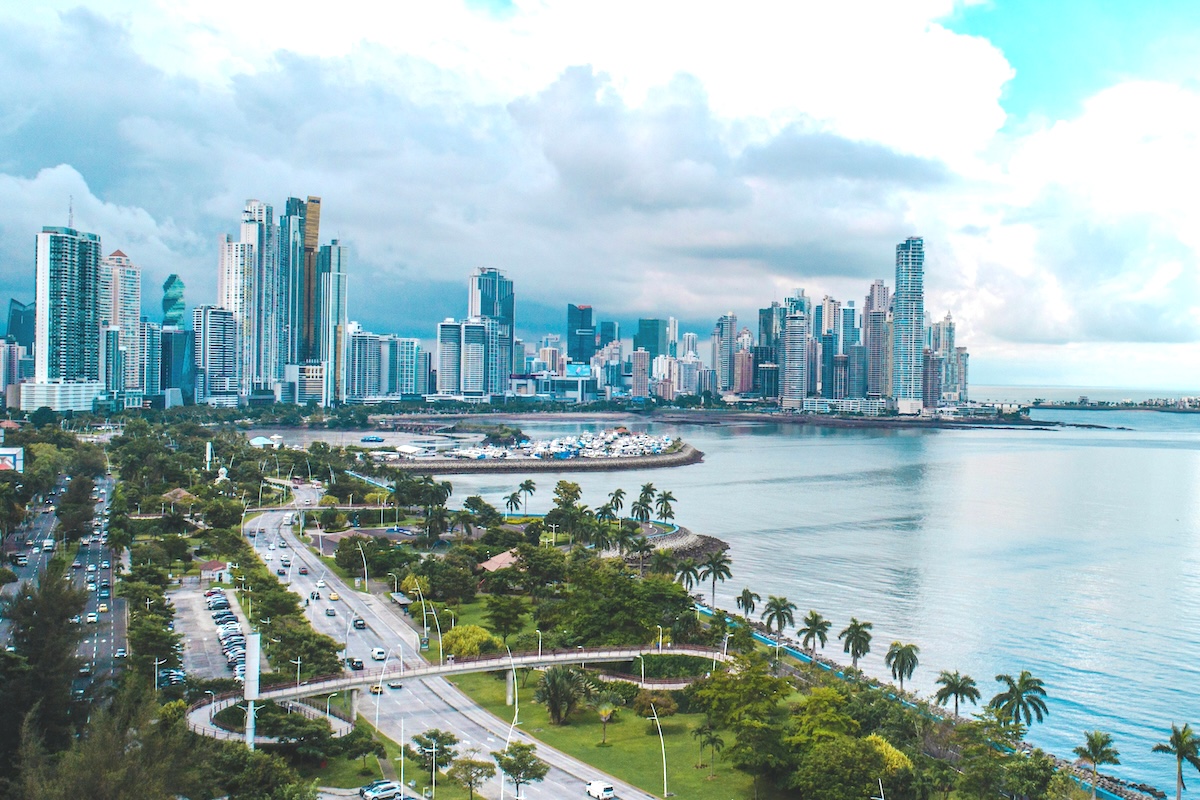Skift Take
Sports events are once again attracting massive numbers, but the right destination can be key to ensuring crowds cheer to a full stadium — and return home with all the best stories to share with fellow fans. Here are the seven must-haves for a winning sports event host city.
Travel is back: Skift’s Travel Health Index, a measurement of overall activity in the travel industry, just exceeded 2019 levels for the first time since the Covid pandemic hit. Sports travel has seen the same upward trend, but what kind of destination is most likely to draw fans back to the arena? To help uncover the winning formula, Skift Meetings is taking a deep dive into a city that has been coming out on top for recent bids: Baltimore. Here are the seven must-have elements to look for in your next sporting event destination.
1. A Sports Legacy
Betting on a sporting event host city is a bit like betting on a team; the first thing you want to look at is its track record. Has the city hosted major sporting events in the past? Does it have a strong local sports culture and a dedicated community of fans? What experience does the city have hosting major events in specific sporting categories relevant to your event, like court-bound ball sports or outdoor track and field meets? The answers to these questions will help determine whether or not a potential host city is up to the challenge.
Year-round mild weather and a compact downtown area have long made Baltimore a haven for sports travel. For over 150 years, the city’s sports legacy has been charming fans and drawing crowds from across the country. Sports history happened here: Babe Ruth didn’t just hail from Baltimore; he led the Orioles to greatness on his way to becoming one of the most legendary baseball players of all time. Going back even further, the Preakness Stakes has been held at Pimlico Race Course since 1873. But Baltimore’s sports legacy doesn’t stop there. The city has built a successful track record of attracting and hosting countless sporting events across a wide variety of athletic disciplines, from the Maryland Cycling Classic to the CIAA Basketball Tournament and the Women’s Lacrosse World Cup to AAU Junior Olympic Games.
A Destination Partner with Experience in Sporting Events
This kind of sports legacy is also a good sign that the city’s destination marketing organization (DMO) will have the expertise needed to ensure your event goes off without a hitch. Chris Aronhalt, owner and president of Medalist Sports, noted how essential his destination partners were in successfully executing the Maryland Cycling Classic competition. “Led by Visit Baltimore, as well as the City of Baltimore, both organizations listened, as well as directed, in the overall plan of execution of the event. They were true partners,” he said.
When selecting a destination for your next sporting event, be sure to check in with the city’s DMO to see what kinds of assistance they offer with logistics, supplier sourcing, safety management, and marketing.
“As the producers of an international, professional cycling event which is heavy on logistics, the event staff, media, athletes (from over 30 countries) and spectators were welcomed by everyone, with strong collaboration on safety and experience,” said Aronhalt of the impact this partnership has had on Maryland Cycling Classic.
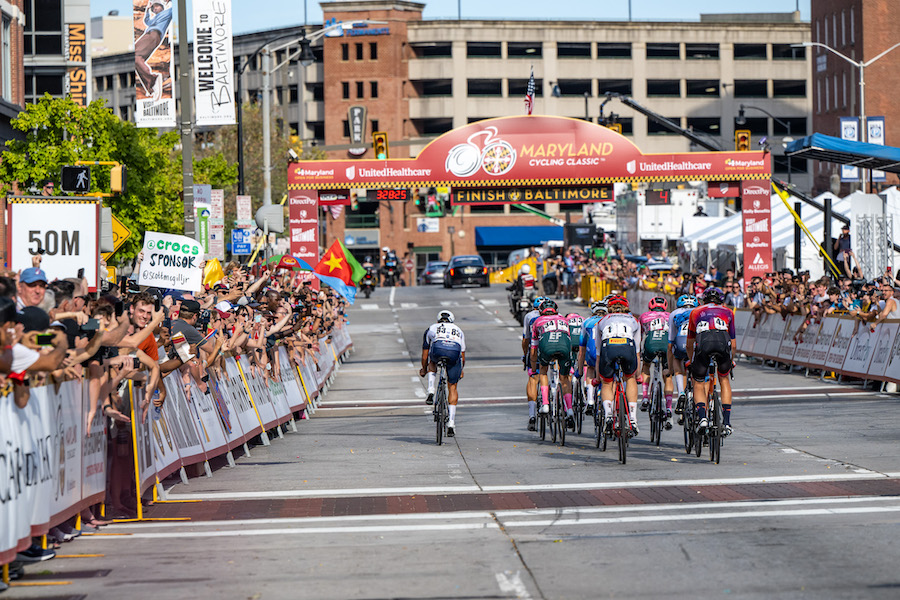

2. State-of-the-Art Facilities
If a city has experience hosting major sporting events, chances are that it has the facilities you need to host your own event. That’s especially true if they have experience hosting events in the same sport; a host city with a football legacy may not necessarily have the right facilities for a national swim competition. Once you find a city with the right facilities for your sport, it’s always a good idea to check when they were last renovated and how close they are to other key venues like the city’s convention center, hotel-rich areas, and tourist attractions.
In Baltimore, CFG Bank Arena just received a $200 million renovation to modernize everything from acoustics to accommodations and event seating to food and beverage selections. As the city’s largest indoor sports and entertainment facility, the arena sits directly across the street from the Baltimore Convention Center, which boasts 300,000 square feet of exhibition space, 50,000 square feet of meeting space, and other multifunctional areas situated both indoors and outdoors. Both CFG Bank Arena and the Baltimore Convention Center are within walking distance of Camden Yards, the stadium complex that includes M&T Bank Stadium (home of the Ravens) and Oriole Park (home of, you guessed it, the Orioles). There are also a number of Baltimore area colleges and universities with state-of-the-art sporting facilities on offer, including:
- Towson University
- Morgan State University
- Loyola University
- Johns Hopkins University
- Coppin State University
- Goucher College
- The University of Maryland, Baltimore County
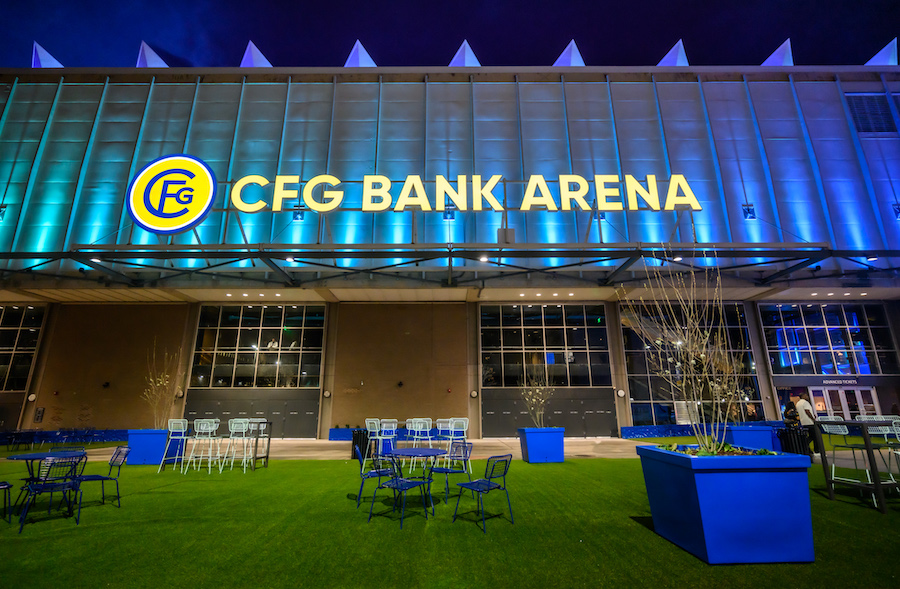

3. Hotels & Accommodations
There’s nothing worse than buying a ticket to a big game only to find out that the only affordable hotel vacancy left is a two-hour drive away from the downtown stadium. That’s why it’s key for organizers to choose a sporting event host city with plenty of hotel space to spare. Traveling for a sporting event can be an expensive endeavor, especially when the whole family is making the trip. Check that your potential host city offers convenient accommodations for a range of budgets, from family-friendly hospitality staples to stylish boutique hotels and luxury-level resort options.
As a prime example, Baltimore’s convention campus stretches along a seven-mile waterfront promenade, boasting 9,000 rooms across 34 different hotels (with 5,500 of those rooms being committable). Visitors will find 4,400 rooms (3,700 committable) within three blocks of the convention center, and 2,300 rooms (2,000 committable) within just one block. Maintaining such a robust hotel network allows Baltimore to cater to a wide range of price points and travel preferences. Guests can choose between waterfront luxury at the Four Seasons and airport convenience at the Westin, or between boutique style at Hotel Monaco and budget-friendly ease at the Hilton Garden Inn.
4. Easy Access & Robust Transportation
Whether it’s out of a concern for the environment or simply to avoid the hassles and high cost of airport travel, more and more people are opting to drive rather than to fly. With that in mind, it’s more important than ever to choose a destination that’s within driving distance of your main fan base. If it’s easy for travelers to get around by foot once they’ve arrived, all the better. Getting to and getting around a host city are both top priorities for traveling sports fans. Making sure both are equally well-thought-out in advance will make the trip that much more worthwhile for visitors. Built-in accessibility also helps relieve the burden that sporting events can place on local transportation infrastructure. The more compact and walkable a city is, the easier it will be for fans to navigate and the less disruption they’ll cause for local traffic.
Baltimore is within driving distance for one-third of the East Coast population — the perfect location for it to become a hub for major sporting events in the mid-Atlantic region, where its affordability truly stands out. For those who’d rather fly or take the train, both Amtrak’s Penn Station and Baltimore-Washington International Airport are less than 15 minutes away by car from Baltimore’s bustling downtown. Once visitors have arrived in town, Baltimore’s compact downtown core is walkable and pedestrian friendly. It’s also easy to navigate the greater Baltimore area using a variety of public transportation options including the Charm City Circulator’s free clean-energy buses, water taxis, subways, and all the popular rideshare services.
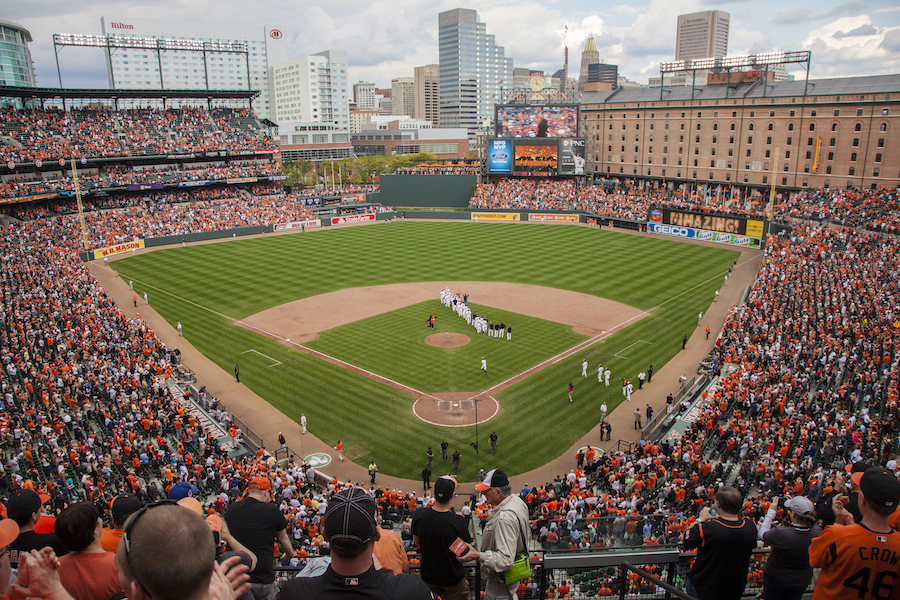

5. Affordable Activities & Attractions
Sporting events and fan gatherings are never more important than when national pressures weigh on citizens. Engaging in a national pastime or supporting a favorite team in person can lift people’s spirits and bolster their mental state while times are hard, but it’s difficult to reap those benefits if the cost of attendance is prohibitive. While splurge-worthy sports travel stands as its own category, affordability is key for both event organizers and ticket holders, especially during times of inflation. Take the time to consider whether or not a potential host city offers activities and attractions that don’t break the bank, so that fans and visitors have the opportunity to enjoy the full travel experience either before or after the game.
A key part of Baltimore’s appeal is that it offers so many ways to unwind that are affordable or even free. It’s a financially accessible city to visit, navigate, and enjoy to the fullest. Highlights of Baltimore’s award-winning arts scene include the Baltimore Museum of Art, the Walters Art Museum, and the sculpture gardens at the American Visionary Art Museum, which are all entirely free to visit. For sports fans who are also history buffs, free and affordable attractions include Fort McHenry National Monument, and Washington Monument and Mount Vernon Place. The city’s public parks, fountains, and more offer free opportunities to get outside and experience life with the local Baltimore community.
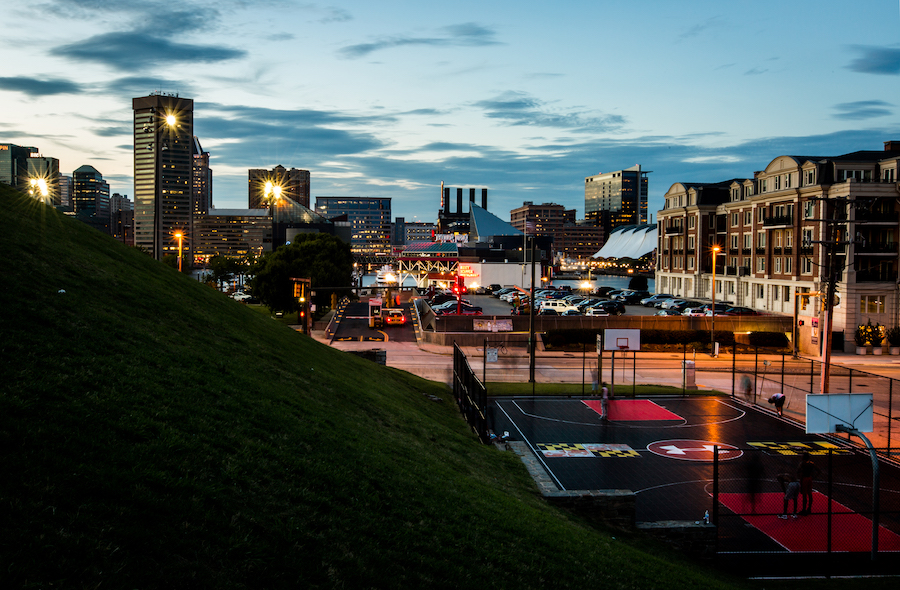

6. Walkable Restaurant & Brewery Options
What vacation is complete without a meal to remember? Sports travelers cannot live on stadium food alone (although both Camden Yards and CFG Bank Arena are packed with world-class and out-of-the-box dining options).
Baltimore’s thriving food and drink scene has something for everyone, and the city’s various farmer’s markets are a free-to-visit feast for the eyes. Beer lovers and whiskey aficionados can schedule a tour at Union Craft Brewing or Sagamore Spirit Distillery as a celebration when their team wins — or as a safe way to drown their sorrows when it doesn’t.
Chris Aronhalt, owner and president of Medalist Sports, explained that Baltimore’s vibrant city scene was a major draw for the Maryland Cycling Classic. “On behalf of the staff and athletes, what was most appealing were the various neighborhoods, culture and of course, fantastic restaurants — all being very extremely accessible,” he said.
7. Family-Friendly Options
Just as the popular kids’ song “Take Me Out to the Ball Game” suggests, sporting events are often key opportunities for quality family time. For that reason, it’s key to think about your host city’s family-friendly attractions. Zoos, aquariums, interactive museums, and public parks are classic favorites.
Baltimore offers plenty of affordable kid-friendly activities to keep energetic young ones engaged around the sporting schedule. The Maryland Science Center is filled with interactive exhibits and lessons for learners of all ages, while the Port Discovery Children’s Museum encourages hands-on, experiential learning in categories like art, music, and history. The Maryland Zoo and National Aquarium are all-day fun for animal loving families. To take advantage of the health benefits that come with time spent outdoors, consider a family outing among its 4,000 acres of parkland.
Giving Your Sports Event a Head Start
As sports travel continues to bring people together and foster a sense of community when people need it most, not every city is the right choice for a major sporting event. From the quality of experience that a city can offer to the fundamental infrastructure required to handle huge and passionate crowds, it’s important for planners and organizers to do their due diligence in narrowing down potential host cities. Checking for these five must-have components will help ensure that sporting events go off without a hitch — and that sports fans have memorable experiences that go down in their own personal fan histories.
To learn more about Baltimore’s strengths as a top host city, reach out to Christina Ghani Smith, director of sports sales, by phone at 410-659-8375 or by email at [email protected].
This content was created collaboratively by Visit Baltimore and Skift’s branded content studio, SkiftX.

